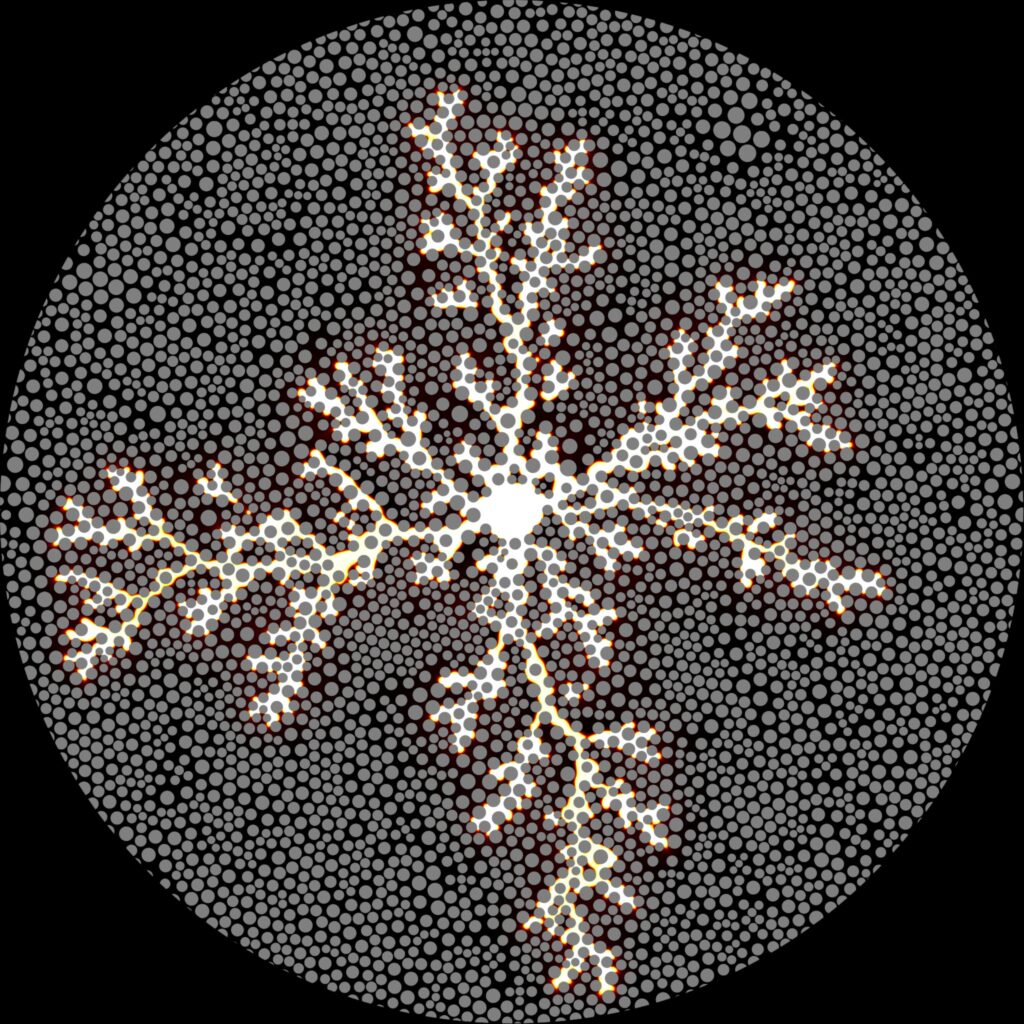
Here’s an image I took recently with and electron microscope while looking at copper foil. It’s apparently comprised of small pyramids of 1 micron copper crystals, and I thought the shadows from the surface relief created a beautiful effect.


Here’s an image I took recently with and electron microscope while looking at copper foil. It’s apparently comprised of small pyramids of 1 micron copper crystals, and I thought the shadows from the surface relief created a beautiful effect.

A paper that I contributed simulations to was recently published in the journal PNAS. The contributors were asked to simulate the pore-scale oil/water displacement pattern in a radial Hele-Shaw cell with posts, under different injection rates and wettability conditions. Experimental data was provided and the idea was to compare the pros and cons of different modeling techniques. It was a challenging task.
I submitted phase-field results which were accurate for several of the cases, but like many techniques struggled with strong imbibition. I would like to point out one correction that never made it into the final paper. Fig. 4B shows my results, PF2, producing a very inaccurate finger width of Wf=93. This value was calculated from my original submission, which stopped well before the injected fluid reached the boundary. During revision I ran the simulation to completion (see results in supplementary information) which produced a finger width of Wf=20, close to the experimental value. Unfortunately I missed that Fig 4B was not updated with the correct Wf in the final revision, and the paper was published with the old value.

Comparison of (a) simulated and (b)-(c) observed lithiated diamond cores in LixFePO4 single particles.
My postdoc with Prof. Martin Bazant officially ended 6 years ago, but it’s still generating research papers! A paper that we wrote was just published at Electrochemistry Communications, and is available for free at this link until October 28.
Over that time we had been following the progress in advanced microscopy techniques applied to battery materials, and realized that our model of lithium iron phosphate captured many of the features researchers were imaging. The model helped resolve conflicting reports from different researchers who looked at a variety of different size LiFePO4 crystals. The smallest crystals at the nanoscale are controlled by their surface properties, while micron sized crystals are dominated by elastic energy. Just by running larger simulations we observed the transition that experimentalists were imaging. After a bunch of time invested on nights and weekends, this paper is finally finished.